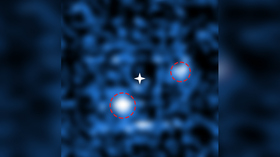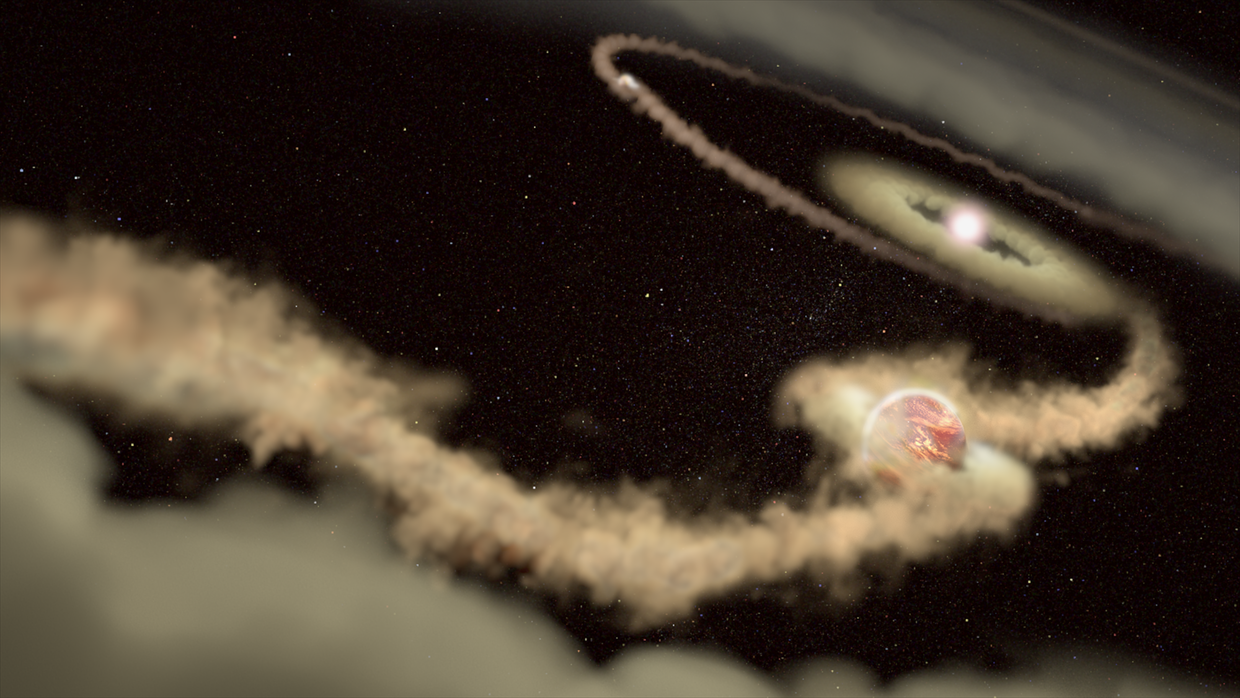It's a planet! Two newborn exoplanets caught sucking in matter from distant star

Astronomers have released images of a nascent two-planet system being formed around a young star, a bit smaller than the Sun. It's the first time a duo of planets orbiting the same star have been spotted while still in the making.
The photos offer a rare glimpse into the process of planet birth, showing the gas planets, named PDS 70b and PDS 70c, accumulating matter from within a disk of dust and gas encircling their host star, PDS 70.
It is only the second time a multi-planet system has been photographed in its toddler state, and the first time for a two-planet system.

"This is the first unambiguous detection of a two-planet system carving a disk gap," Julien Girard of the Space Telescope Science Institute in Baltimore, Maryland, a co-author of the study, said in a statement.
While PDS 70b, the bigger of the pair, was discovered last year, its companion, PDS 70c, was not known to scientists before. Being twice as far from its star as PDS 70b, PDS 70c might be less massive than PDS 70b, but is far from lightweight in planetary terms. PDS 70c weighs in at up to 10 times the mass of Jupiter, the largest planet in our Solar System, itself two-and-a-half times as heavy as all other Solar System planets combined.
Also on rt.com NASA’s X-ray image reveals entire sky in stunning detail (PHOTO)"We were very surprised when we found the second planet," Sebastiaan Haffert of Leiden Observatory, lead author of the study published in Nature Astronomy magazine, said on Monday.
PDS 70b is even larger, with a mass estimated at four to 17 times that of Jupiter.
The discovery was made possible thanks to the Multi Unit Spectroscopic Explorer (MUSE) spectrograph of the European Southern Observatory. The giant eight-meter telescope fitted with four lasers was used to provide high resolution imagery of the process, which has previously been hidden from the human eye due to the host star's glare.
READ MORE: Cosmic black eye? Massive punch from dwarf planet may explain why our moon is so weird
Exoplanets like PDS 70b and PDS 70c – that is, planets orbiting a star outside a solar system – have been discovered every year. So far, there are 4,071 confirmed finds, so the discovery of a new one is not a big deal. However, planet 'nurseries' are an extremely rare sight. Researchers hope that as technology develops, they will soon be able to study these systems in more detail – for example, assessing the temperature and density of the gas within the disk.
Subscribe to RT newsletter to get stories the mainstream media won’t tell you.













